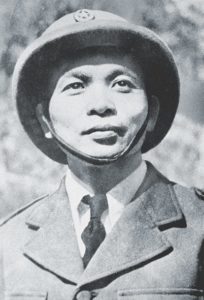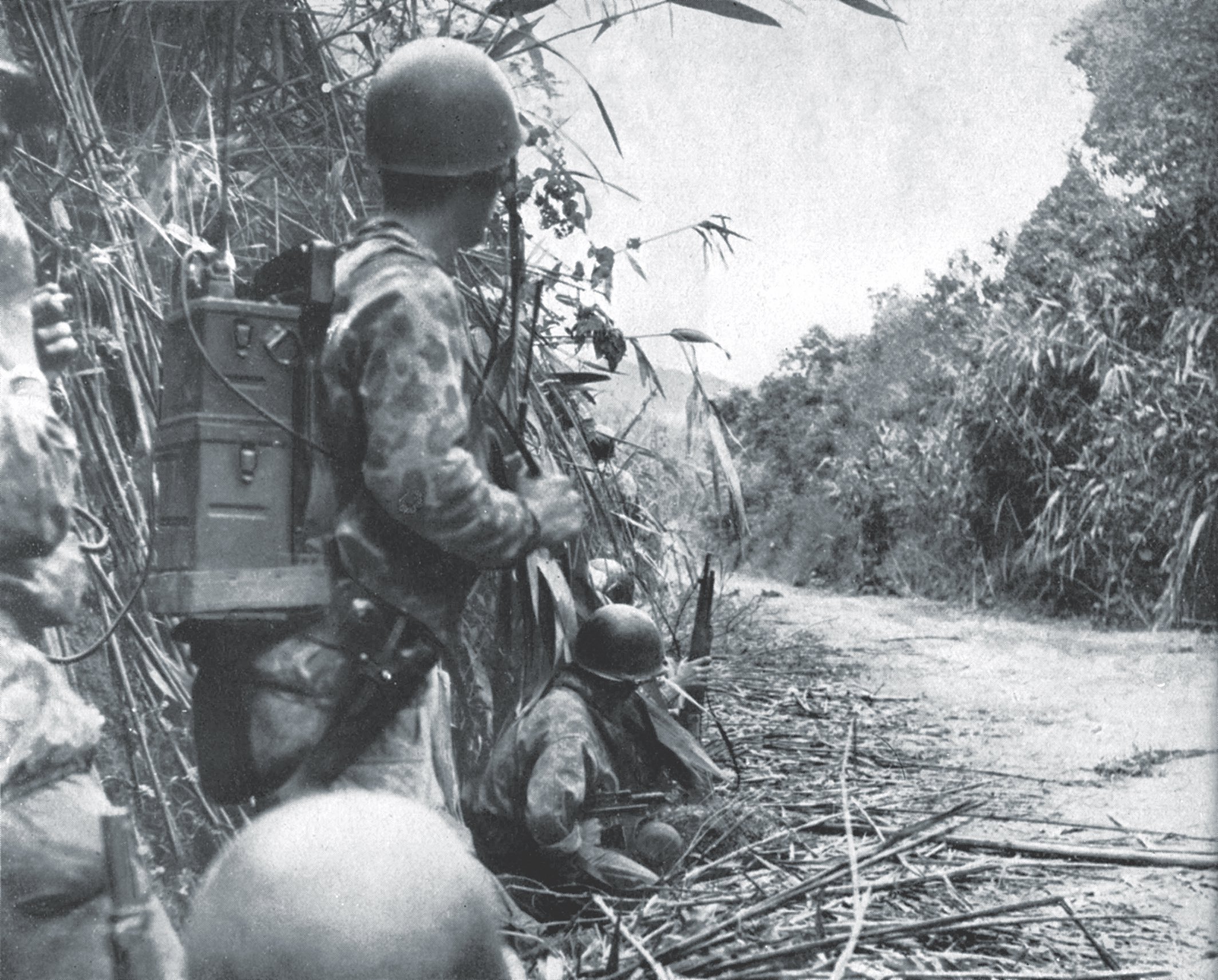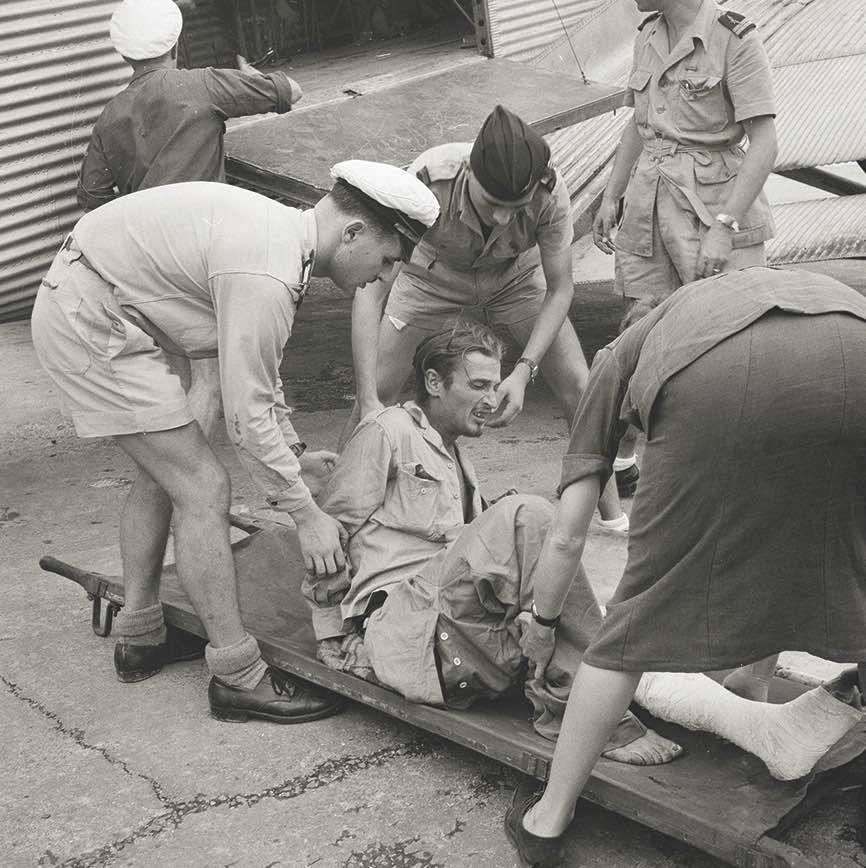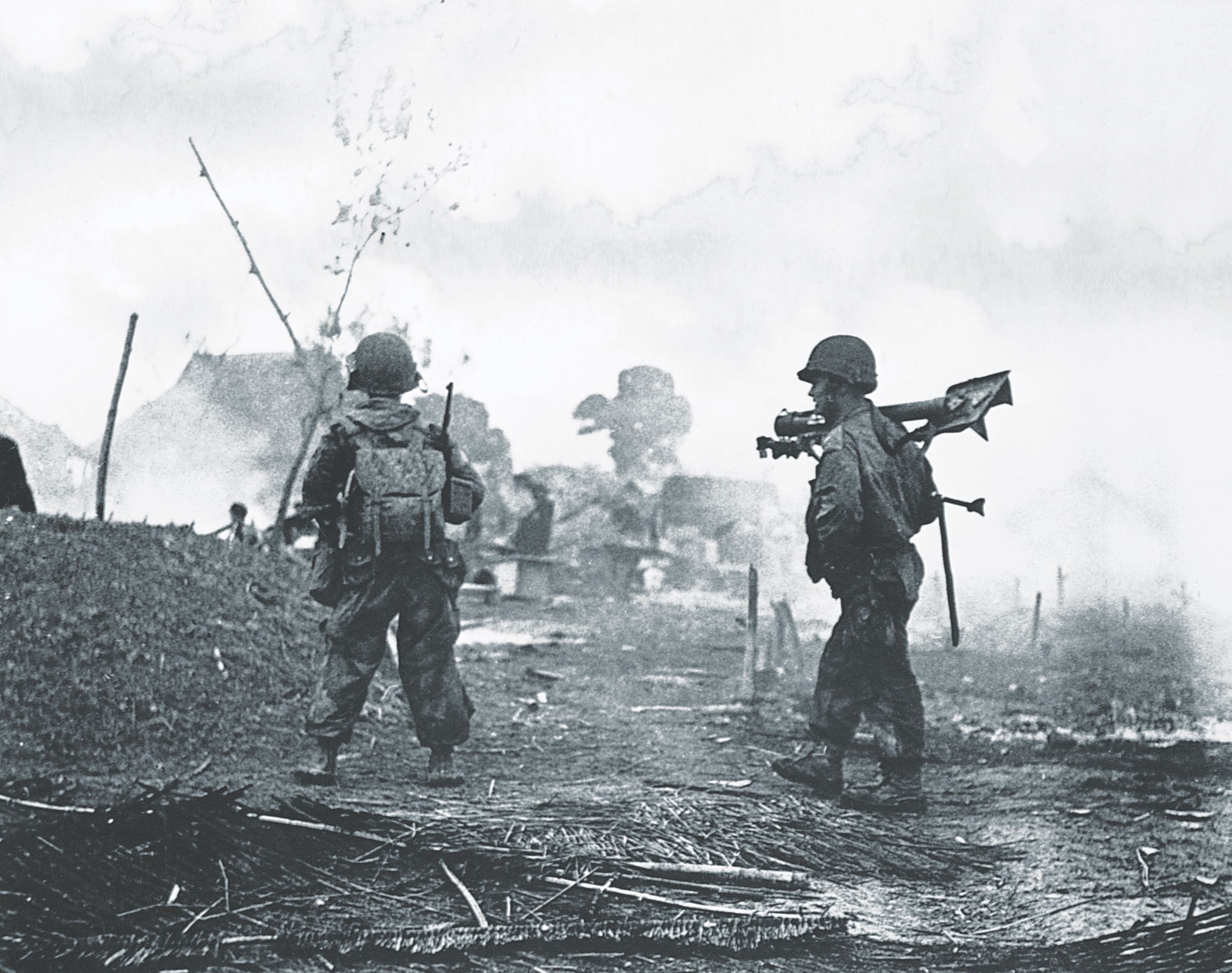Trần = 4215 = 12 = 3
thị = 451 = 10 = 1
Đào = 417 = 12 = 3
Hoa = 571 = 13 = 4
Cộng lại: 3 1 4 4 = 12 = 3
===
NGUYỄN = 7
THỊ = 451 = 10 = 1
THU = 456 = 15 = 6
HƯƠNG = 56753 = 26 = 8
Cộng lại: 22
Chúng tôi khẳng định một chân lý hiển nhiên rằng mọi người sinh ra đều bình đẳng, rằng tạo hóa đã ban cho họ những quyền tất yếu và bất khả xâm phạm, trong đó có quyền sống, quyền được tự do và mưu cầu hạnh phúc . . . (Lời Mở Đầu Của Tuyên Ngôn Độc Lập Mỹ)
Trần = 4215 = 12 = 3
thị = 451 = 10 = 1
Đào = 417 = 12 = 3
Hoa = 571 = 13 = 4
Cộng lại: 3 1 4 4 = 12 = 3
===
NGUYỄN = 7
THỊ = 451 = 10 = 1
THU = 456 = 15 = 6
HƯƠNG = 56753 = 26 = 8
Cộng lại: 22
The young soldiers of Gen. Vo Nguyen Giap’s newly formed 308th Division, freshly trained and equipped by the communist Chinese, showed off their skills in stealth operations against the French in May 1950. Four of Giap’s infantry battalions scaled steep limestone heights surrounding the town of Dong Khe in northeast Tonkin, the northernmost region of Vietnam, without being detected even though they were hauling five American-made 75 mm pack howitzers. At dawn on May 25, they opened fire with a devastating sustained barrage on the French defenses and the 800-man garrison, consisting mostly of Moroccan riflemen under French officers.
Giap, commander in chief of communist-led Viet Minh independence fighters at war with colonial ruler France since December 1946, lifted the barrage after two days of shelling. His troops then attacked in human waves, overrunning the base and almost wiping out the remaining defenders, a few of whom escaped into the jungle. At midmorning on May 27, 48 hours after the barrage began, the Viet Minh had seized control of Dong Khe.

The French responded quickly to the May 27 attack, dropping the 3rd Colonial Parachute Battalion onto the overrun base late the same morning and surprising Viet Minh troops engaged in looting. After several hours of heavy fighting, often hand-to-hand, the Viet Minh abandoned the post and melted back into the jungle.
Giap never intended to hold the base. The general had accomplished his objective for now. The May attack was Giap’s last opportunity to season the men of the 308th Division for formidable tasks ahead. He was preparing to unleash a large-scale offensive against six French frontier posts—including Dong Khe—along Colonial Route 4 near the border with China when the monsoon rains ended in late September or early October. Months of arduous preparation lay ahead of Giap.
After the Viet Minh withdrew from Dong Khe, the French commander in chief, Gen. Marcel Carpentier, a total stranger to Indochina, could have avoided another Viet Minh onslaught by evacuating the frontier forts, which contained almost 12,000 French and North African troops, French Foreign Legionnaires, allied Tai tribesmen and camp followers. He had enough time to evacuate them. However, he failed to do so.
Carpentier may have contracted hubris, a disdain for the enemy that infected many French—and later American—officers. They vastly underestimated the fighting capabilities of the enemy while greatly overestimating their own.
In late 1949, Giap ratcheted up pressure on the large French supply convoys trying to navigate Route 4 to reach the forts. The convoys drove into deadly ambushes, roadblocks and blown bridges. The growing presence in southern China of Mao Zedong’s communist forces—recently victorious in the Chinese Civil War against Chiang Kai-shek’s Nationalists—encouraged Giap to attack the Route 4 posts in late 1950.
Giap had spent grueling months in the Viet Bac region, a remote territory in north and northeastern Tonkin where the Viet Minh insurgency was headquartered. He organized his 100,000 main force regulars into six mobile divisions (70 battalions) backed by artillery, much of which consisted of U.S.-made weapons captured from the defeated Chinese Nationalists.
Giap was now ready to give his troops their baptism of fire in conventional warfare. The Viet Minh’s target was the string of isolated Route 4 French forts: Dong Khe, Cao Bang, That Khe, Nam Nung, Tien Yen and Lang Son. Another fortress, Lao Cai, supported by four surrounding forts, was in the Tai Highlands, west of the Red River where it crosses the Chinese border. A decisive Viet Minh victory would clear French forces from all of northern Tonkin east of the Red River, allowing unfettered movement of men and supplies from communist China into the Viet Bac. As a bonus, it would give Giap’s troops a morale-boosting triumph in their first major test on the battlefield.
In May 1949 the French government sent army Chief of Staff Gen. Georges Revers to Tonkin on a fact-finding mission. He recommended that border posts be heavily reinforced or abandoned as soon as safely possible. The French did neither.
After recapturing Route 4 in 1947 during Operation Lea, the French installed permanent garrisons at intervals along the “road”—actually, nothing more than a well-worn, one-lane dirt path, 12-feet wide at its widest and flanked on both sides by heavily forested hills, jungle and jagged limestone peaks. In 1950, Route 4 was controlled by the Viet Minh. The forts were not mutually supportable and could be attacked individually at Giap’s discretion. They were not only vulnerable but also tying down thousands of troops needed in the Red River Delta, where the Viet Minh were adding to the number of villages they controlled.
Giap was never idle during the wet months between campaigning seasons. From 1948 to 1950 he established a logistical system fully capable of supporting his large combined-arms divisions over long distances and periods of time. He was fortunate to have gained a powerful ally in Mao. The fellow communist helped Giap solve his heavy armament and complex supply problems, sent experienced officers to the Viet Bac to act as trainers and mentors, and established a military advisory group at the battalion level and higher to help Giap and his officers plot strategy. The general and his staff spent endless hours preparing for attacks. The infantry used scale models of the targeted forts to practice assaults, day after day. During the coming offensive, Giap never attacked without at least a 3-1 advantage in numbers; at times it was 8-1.
By late 1950 Viet Minh roadblocks, mines and ambushes along Route 4 had inflicted heavy losses in French soldiers and equipment on their way to the big base at Cao Bang, commanded by the “Fighting Legionnaire,” Lt. Col. Marcel Charton. Stymied on the ground, the French began supplying Cao Bang only by air. They evacuated their smaller Route 4 posts, leaving Cao Bang, Lao Cai, That Khe and Dong Khe the only forts still garrisoned upcountry from the regional headquarters at Lang Son. Route 4 had become the deadliest road in Indochina. As the Legionnaires put it, “The Route Coloniale No. 4 is a road than a man travels only one time alive.”
In early September Carpentier announced that the French would attack and capture the town of Thai Nguyen on Colonial Route 3. Afterward, the garrison at Cao Bang would evacuate and walk south on Route 4, leaving artillery and heavy transport behind. Carpentier instructed Charton to conduct his withdrawal with “speed and surprise,” neither of which was remotely possible along Route 4. Thai Nguyen had no tactical connection to the Route 4 forts. Its capture was essentially a publicity stunt to deflect attention from the Cao Bang evacuation.

Meanwhile, a relief column would push north from Lang Son. When it reached Cao Bang, the combined force would move south to the relatively safer Red River Delta. Carpentier foolishly hoped both objectives could be completed by mid-October before the end of the monsoon rains and before Giap was ready for mobile operations—although, in fact, he already was. The general had moved at least 14 infantry battalions and three of artillery to the frontier ridge.
Well before Carpentier could carry out his evacuation plan, five battalions of the Viet Minh 308th Division, backed by a heavy weapons battalion, attacked Dong Khe on Sept. 16, marking the opening round of Giap’s assault on the border posts.
After a mortar and artillery barrage Viet Minh commandos, wearing only shorts and carrying Bangalore torpedoes (explosive-filled tubes) and satchels packed with explosives, approached the fort. They blasted holes in the perimeter wire and were followed by waves of attackers. The 300 defenders of 5th and 6th companies, 2nd Battalion, 3rd Foreign Legion Infantry Regiment, had to fight without air support because of heavy cloud cover but still were able to beat back repeated assaults as casualties mounted on both sides. The attackers, however, resolutely pressed on for more than two days. At midmorning on Sept. 18, they finally overran Dong Khe. The 300-man garrison was decimated: 140 Legionnaires were captured, 12 escaped to That Khe, and the rest were dead or missing.
Despite the loss at Dong Khe, Carpentier plowed ahead with his plan. He attacked Thai Nguyen in late September with two infantry divisions, backed by armor, artillery and air cover. His forces took the town in mid-October against limited resistance. Since Thai Nguyen contained little of value and the enemy made no effort to retake the town, the French stayed there for only 10 days before abandoning it. Giap’s thorough preparations had paid off. With his troops astride Route 4 and holding Dong Khe, he had clearly gained the initiative.
Worried that Cao Bang might be surrounded, Carpentier ordered Charton to destroy his artillery and heavy motor transport, then begin his withdrawal to the south on the evening of Oct. 2. The Legionnaire leader was instructed to take Route 4, not the safer Route 3 leading to Thai Nguyen. That proved to be a huge, costly blunder, given that the Viet Minh were blocking Route 4.
Carpentier assembled a relief force at Lang Son. Commanded by Lt. Col. Marcel Le Page, it consisted of three North African battalions—the 1st and 11th Moroccan Tabors and a battalion from the 8th Moroccan Rifle Regiment. The Le Page column, known as Task Force Bayard, was ordered north to That Khe, where it arrived on Sept. 19 and joined forces with one of the most acclaimed, battle-hardened units in Indochina, the 1st Foreign Legion Parachute Battalion.
The officers of the parachute battalion soon became alarmed at Le Page’s apparent indecision and inexperience. A “confidence gap” arose between the Legion paratroopers and the African riflemen. Le Page was clearly unsuited for the mission. An artilleryman, he was unfamiliar with jungle warfare. He also had health issues, was unsure of his Africans and seemingly unsure of himself.
On Sept. 30, Le Page received what was an impossible order under the existing conditions: March Task Force Bayard north and retake Dong Khe, 11 miles away, by Oct. 2. With no intelligence on the situation at Dong Khe, Le Page was rightly hesitant. Heavy rains rendered air cover impossible and turned Route 4 into a muddy morass that allowed no artillery or trucks to accompany the task force. Additionally, Giap had massed at least 10 infantry battalions, backed by a full artillery regiment, around Dong Khe. Le Page’s hope that the order would be rescinded didn’t materialize. As the column moved out, he told a friend, “We will never come back.”
At nightfall on Sept. 30, Le Page and his 3,500-man task force headed for Dong Khe with the 1st Foreign Legion Parachute Battalion leading the way. By 5 p.m. the next day, Oct. 1, Le Page and his column had, surprisingly, managed to fight through numerous obstacles and reach the eastern outskirts of the town, where the colonel finally halted after coming under heavy machine gun and artillery fire from the fort ruins. Le Page boldly attempted a pincer movement on Oct. 2, sending the Legionnaires against one enemy flank and the Moroccans against the other. Both attacks failed amid the dense jungle, strong counterattacks and steep limestone peaks. Le Page’s column had to bypass the fort.
Le Page was ordered to leave Route 4 and move west the next day, Oct. 3.
WHEN THE TONKIN THEATER COMMANDER, MAJ. GEN. MARCEL ALESSANDRI, WAS INFORMED OF THE ORDER, HE WIRED CARPENTIER: “CANCEL EVERYTHING. IF YOU CARRY ON IT WILL BE A CRIME.”
With the 1st Foreign Legion Parachute Battalion in front, Task Force Bayard fought its way west and then north from jagged peak to jagged peak along the Quang Liet Trail before it halted at Na Pa, just 3 miles from Dong Khe. That night the Le Page column, huddled in a “bowl” on the side of a hill, was hit by wave after wave of Viet Minh attacks, but held on.
Ordered to leave Cao Bang at nightfall on Oct. 2, Charton failed to destroy his artillery and motor transport as instructed. Instead he loaded all his men onto trucks and did not get underway until noon on Oct. 3. Led by the 3rd Battalion, 3rd Foreign Legion Infantry Regiment, Charton’s miles-long column included 1,000 French troops, 600 Legionnaires, 1,000 mostly Tai fighters and their families, the wounded and 500 men, women and children who lived at Cao Bang.
His progress slowed by the usual ambushes and roadblocks, Charton had traveled only 9 miles by sunrise on Oct. 4, when the column halted near Nam Nung on Route 4.
Around noon, Charton received disturbing news in two radio messages from Lang Song: First, the Le Page column, after leaving Route 4 the previous afternoon, was now surrounded in the jungle west and south of Dong Khe and being mauled; second, Charton’s column was to move as quickly as possible to Le Page’s aid. With Route 4 blocked by the Viet Minh, Charton destroyed his now-useless trucks and artillery, left the refugees behind and pushed west off Route 4 into the brush with the 3rd Battalion, 3rd Foreign Legion Infantry Regiment, in the lead as the men hacked through almost impenetrable vegetation.
Charton, at least, had maps of the area and managed to find the Quang Liet Trail leading south to the Quang Liet Valley, where he hoped to rendezvous on Hill 477 with the Le Page column. Le Page’s Foreign Legion parachute battalion, meanwhile, was still trapped on a hill, surrounded by high limestone cliffs that overlooked the valley and the small hamlet of Coc Xa to the west. Their only exit was a narrow passage, the Coc Xa Gorge, at the end of the valley.

With progress exceedingly slow due to the harsh terrain and heavy enemy presence, the Charton column doggedly thrust its way south along the faint trail for two days, nearing the Quang Liet Valley and making radio contact with Foreign Legion paratroopers on Oct. 6. New orders called for the Charton column to hold Hill 590 and cover the rest of the valley while the paratroopers in the vanguard of Task Force Bayard would force a passage of the gorge and push for Coc Xa.
Meanwhile, Le Page’s troops continued a desperate fight against overwhelming numbers in the heavy vegetation and limestone peaks southwest of Dong Khe. After several French units were ambushed and broken up, the survivors were hunted like animals in a forest festering with Viet Minh soldiers screaming in French: “Give yourselves up, French soldiers. You are lost!”
As dawn approached on Oct. 7, what remained of Task Force Bayard was still trapped on the hill. Surrounded by two enemy battalions, Le Page asked the Legionnaires of the parachute battalion to break through the “bottleneck” at Coc Xa Gorge. Before the sun came up they had done so but were almost wiped out in the process. Only 130 members of the battalion’s 500 men survived the morning. The remainder of the Le Page column was heavily engaged, as well. When Oct. 7 ended, only 530 members of the original 3,500-man Task Force Bayard remained.
The haggard remnants of the Le Page column finally linked up with the depleted vanguard of Charton’s column, the 3rd Battalion, 3rd Foreign Legion Infantry Regiment, east of Coc Xa, but the ordeal was far from over. The survivors divided into small groups, leaving the wounded with volunteer medics, and attempted to get through Viet Minh-filled jungles to That Khe, 10 miles to the east. That night, a rescue company of 270 men from the 3rd Colonial Commando Parachute Battalion and 130 men from the 1st Foreign Legion Parachute Battalion Replacement Company were airlifted into That Khe. The Viet Minh chose that morning to launch their heaviest attack yet against Charton’s column and succeeded in wounding and capturing Charton himself. Things went from bad to worse when the panic spread from ranks of Le Page’s terrified North Africans—physically ravaged, delirious and almost out of control—to the Charton group, which itself fell into a state of chaos. Only the Legionnaires held together as effective fighting units, but their numbers soon dwindled. Thousands of Viet Minh soldiers moved in and soon it was over.
Some 300 men reached That Khe on Oct. 8 and 9, including 29 survivors of the 1st Foreign Legion Parachute battalion, the first French airborne battalion ever lost in combat. That Khe was abandoned late on Oct. 9 in haste. The garrison, townspeople and survivors of the Le Page and Charton columns streamed down Route 4. The thinned ranks of the 3rd Colonial Commando Parachute Battalion/1st Foreign Legion Parachute Battalion force, reluctant to leave while their comrades were lost in the jungle not far away, acted as the rear guard.
In an atmosphere of panic, the frontier commanding officer at Lang Son ordered a general withdrawal along Route 4 from That Khe, which added to the chaos and losses. The 3rd Colonial Commando/1st Foreign Legion parachute force, 400 strong when it evacuated That Khe on Oct. 10, hit heavy communist resistance halfway to Lang Son and lost half its men. Again, the survivors broke up into small groups and attempted to push through the jungle to safety, but were killed almost to a man, making the 3rd Colonial Commando Parachute Battalion the second airborne battalion to be lost in action.

On Oct. 17-18, the French abandoned Lang Son even though there was no direct military threat, leaving huge stores of equipment and arms intact—enough food, clothing, medical supplies, weapons, ammunition and materiel to supply a Viet Minh division for at least a year.
Tai partisans holding Lao Cai’s four small, satellite forts fought their way to Lao Cai. Then the entire force was evacuated and Lao Cai abandoned, making Giap’s victory complete. (A coalition of 12 tribes formed the Tai Federation, which was friendly to the French and had been given semi-autonomous status within the French Union in 1948 and a capital at Lai Chau, just west of the Red River on the Sino-Vietnamese border.)
Giap’s victory came at a high cost, however. Of the 30,000 men committed, as many as 9,000 Viet Minh soldiers perished. Many were wounded men who died before they could be carried to the rear, where Giap’s inadequate medical services were unable to handle huge casualties. Nevertheless, Giap’s unprecedented gains left the French in a state of disarray. It was feared the Red River Delta would be attacked, and calls to evacuate colonists from Tonkin were heard. Fortunately for the French, the crisis passed. They soon welcomed a competent, almost legendary new commander in chief, Gen. Jean de Lattre de Tassigny, who completely reversed French fortunes within a year, reinstilling confidence and pride within his fighting forces.
Still, the sting of defeat remained. “When the smoke cleared,” wrote French historian Bernard Fall, “the French had suffered their greatest colonial defeat since Montcalm had died at Quebec in 1749. They had lost 6,000 troops [4,800 killed], 13 artillery pieces, 125 mortars, 450 trucks, three armored platoons, 940 machine guns, 1,200 submachine guns and more than 8,000 rifles. Their abandoned stocks alone sufficed for the equipment of a whole additional Viet-Minh division.”
Without anywhere near enough men nor the political will necessary to bring the First Indochina War (1946-54) to a successful military conclusion, France’s effort to hold its Indochinese colonies finally came to an ignominious end in mid-1954, in the muddy ruins of a flimsy fortress in a valley called Dien Bien Phu.
John Walker served in Vietnam July 1970-June 1971 as a sergeant with the 173rd Airborne Brigade at Landing Zone English in Binh Dinh province in South Vietnam’s central coastlands. He lives in Oceanside, California.
This article appeared in the December 2021 issue of Vietnam magazine.